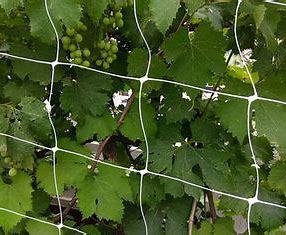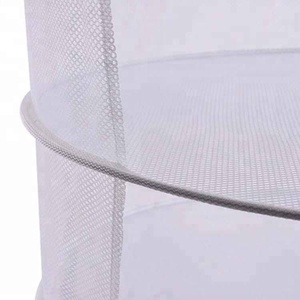
All categories
Featured selections
Trade Assurance
Buyer Central
Help Center
Get the app
Become a supplier

(452 products available)




















































A hanging herb drying net is a specialized tool for drying herbs. They come in various sizes to accommodate different amounts of herbs. The type of net used can significantly impact the drying process and the final quality of the dried herbs. These nets are made from a variety of materials, each with its advantages and disadvantages.
Mesh material
Herb drying nets are made from various mesh materials. These materials are often breathable and ensure proper airflow. These nets are usually made from nylon or polyester. These materials are lightweight and durable. They can withstand the weight of hanging herbs without sagging. The mesh design allows for optimal air circulation, which is essential for drying herbs evenly and preventing mold growth. Some mesh materials are UV resistant, which helps preserve the color and aroma of the dried herbs. Herb drying nets are often collapsible and easy to store when not in use. They are versatile and can be used for various herbs, fruits, and vegetables.
Plastic material
Plastic herb drying nets are another common option. These nets are made from a thick, durable plastic. They are less likely to tear or break than mesh nets. Plastic drying nets are also waterproof. This feature makes them ideal for use in humid or rainy conditions. However, plastic nets may not provide as much ventilation as mesh nets. This can be a problem for delicate herbs that need gentle airflow. Plastic nets are often used for larger, hardier herbs.
Wood material
Some hanging herb drying nets have a wooden frame. These nets provide a more robust and stable structure. They are often used for heavier herbs or larger batches. The wooden frame can support the weight of the herbs without sagging or bending. These nets are also more durable and can withstand outdoor conditions. However, they may be less portable than other options.
Mesh Material
Herb drying nets are usually made of mesh materials like nylon or polyester. These materials are strong, resistant to wear and tear, and can withstand exposure to the elements. They are also lightweight, making the nets easy to handle and move around.
Levels or Layers
Herb drying nets come in various levels or layers. Some have three levels, while others have five. More levels mean that users can dry a lot of herbs at once without taking up too much space. Each level is separated by a net, allowing for good airflow and drying without touching each other.
Closure System
The closure system on herb drying nets makes them easy to use. Zipper openings allow users to put herbs inside quickly and easily. At the same time, they keep insects and debris out. Some nets have drawstring closures. These closures are great for sealing the net tight and keeping the contents safe.
Support and Stability
Some herb drying nets are freestanding. They have a built-in support system, like a collapsible frame. This frame keeps the net stable and upright, even in outdoor conditions. Other nets may require hanging from hooks, poles, or other structures. These options are more suitable for indoor use or when space is limited.
Portability and Storage
Herb drying nets are designed to be portable and easy to store. They can often be disassembled or collapsed when not in use. This feature saves space and makes the net convenient to transport. Some come with carrying bags or pouches, making them perfect for taking on camping trips or to farmers' markets.
UV Protection
Many herb drying nets have UV protection. This protection prevents harmful sun rays from fading the herbs' colors and destroying their oils. It is important for drying herbs that will be used for cooking, storing, or making herbal products.
Indoor Drying
Hanging drying nets are perfect for indoor drying, especially in areas with high humidity. They allow users to dry herbs in a controlled environment. This is ideal for people who live in apartments or places with limited outdoor space. It is also ideal for those who want to dry herbs during the rainy season or winter months when the humidity is high, and the air temperature is low.
Outdoor Drying
Herb drying nets are great for outdoor drying. They keep herbs off the ground and provide good ventilation, which is essential for drying. Using these nets is convenient for gardeners who have many herbs to dry or for those who hold outdoor workshops or cooking classes and want to demonstrate herb drying.
Storing Dried Herbs
Once the herbs are dried, hanging herb drying nets can store them until they are ready for use. This is especially useful for large batches of herbs that will be used infrequently. The net prevents moisture from getting to the herbs and keeps pests away.
Craft and DIY Projects
Herb drying nets are not just for drying herbs; they can also be used for various craft and DIY projects. For example, users can use them to create dried flower wreaths, potpourri, or infused oils. The netting allows for easy airflow around the flowers or plants, ensuring they dry properly for crafting.
Fishing Bait
Herb drying nets can store fishing bait like worms, leeches, and shrimp. The net's holes keep water circulation going, ensuring the bait stays fresh and lively while fishing.
Food Preservation
Hanging herb drying nets can dry fruits and vegetables, helping preserve them. This is great for gardeners or farmers with surplus produce. Netting provides good ventilation, preventing drying from humidity or moisture damage.
Material Quality
Opt for herb drying nets made of durable materials like nylon or mesh. These materials are usually breathable and can resist wear and tear. Ensure the net has sturdy zippers or clips for secure closure and easy access to the herbs.
Size and Tier Options
Choose an appropriate size and tier option for the drying net based on the amount and types of herbs to be dried. Smaller nets with 3 to 4 tiers are suitable for home use, while larger nets with 7 to 10 tiers are suitable for commercial use. Ensure the net fits in the drying space without being obtrusive.
Ease of Use and Storage
Look for herb drying nets that are simple to set up, take down, and store. Choose nets that come with clear assembly instructions and are foldable for easy storage when not in use. Make sure the net is lightweight and comes with the right hanging accessories for convenient use.
Breathability and Airflow
Make sure the herb drying net is breathable and has good airflow. This allows for efficient drying of herbs while preventing moisture accumulation and mold growth. Choose nets with mesh sides or fine mesh material to ensure proper airflow but still keep out pests.
Durability and Construction
Ensure the herb drying net is made of durable materials and has a solid structure. Choose nets with reinforced stitching and sturdy frames to ensure longevity and the ability to support heavy loads. This is especially important for commercial use, where the net may need to support a large quantity of herbs.
Adjustability and Customization
Select herb drying nets that offer adjustable and customizable features. Look for nets with removable tiers or adjustable tier heights to accommodate different sizes and types of herbs. This flexibility allows users to dry various herbs without needing multiple drying nets.
Cost-Effectiveness
Consider the drying net's price and performance ratio. Choose a net that meets the needs and budget without compromising quality. For commercial use, keep in mind the net's durability, ease of use, and ability to support heavy loads, which may require a slightly higher investment but will provide better performance and longevity.
Q1: What is the best way to dry herbs using a drying net?
A1: Hang the herb drying net in a well-ventilated area with good airflow. Place the herbs in one or more layers, making sure they are not overcrowded. For large bunches, consider separating them into smaller portions. Adjust the nets as needed to optimize space and airflow.
Q2: How long does it take to dry herbs in a hanging net?
A2: The drying time for herbs can vary depending on factors such as herb type, humidity, and net size. Generally, delicate herbs like basil or parsley can dry within 1-3 days, while sturdier ones like rosemary or thyme may take 5-7 days or more. Check the herbs regularly to avoid over-drying.
Q3: Can one dry flowers in a hanging herb drying net?
A3: Yes, a drying net can dry delicate flowers. It provides gentle airflow, preventing browning or wilting. Some flowers that dry well include lavender, strawflower, eucalyptus, and pansies.
Q4: How can one maintain the color of dried herbs in a net?
A4: To preserve the color of dried herbs, avoid direct sunlight and keep the net in a shaded area. Sunlight can fade colors over time, so a shaded spot is essential for drying herbs while maintaining their vibrant hues.
Q5: How does one prevent insects from getting into the net?
A5: Insects can be a problem when drying herbs outdoors or in areas with open windows/doors. To prevent pests, close the net when not in use or place a fine mesh over the opening. Nets with zippers or drawstring closures work well for this purpose.